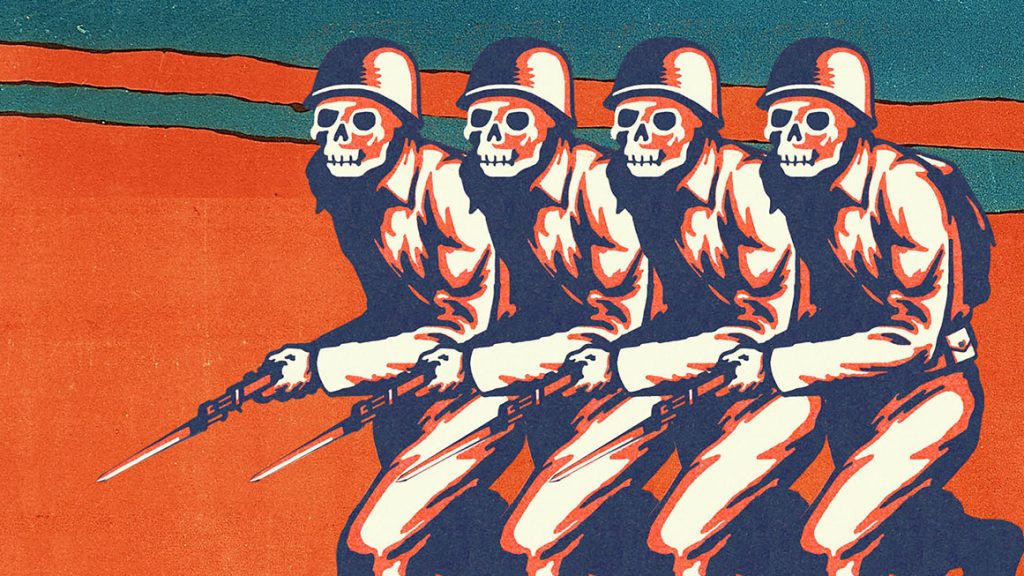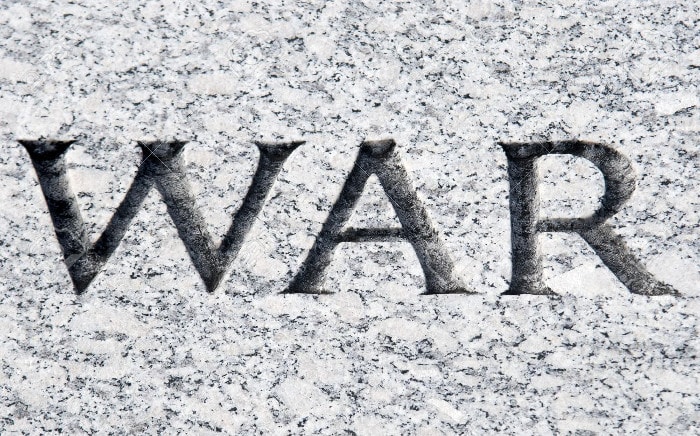“The crisis consists precisely in the fact that the old world is dying and the new world cannot be born; in this interregnum a great variety of morbid symptoms appear. And there will be monsters”.
– Antonio Gramsci

19 September 2024 — The detonation of walkie-talkies around Lebanon a day after scores of pagers used by Hezbollah officials blew up is a one-two punch that drives home the extent of Israel’s penetration of its Shia foe’s defenses across its northern border. It represents utter humiliation for Hezbollah that its security can be so effortlessly breached twice, and be shown incapable of protecting its own people.
The detonating devices in Lebanon offer Netanyahu the benefits of a spectacular, daring success, showing he is taking the battle to the enemy in the north, in the knowledge that Hezbollah, and its Iranian backers, have looked anxious to avoid being drawn into a full-scale war with Israel. The Hezbollah leader, Hassan Nasrallah, sought to mislead his followers by exaggerating the success of a mass rocket and drone attack last month against strategic targets like Israeli intelligence headquarters, to lessen internal political pressure to inflict greater damage on Israel.
So there is huge political gamesmanship at play. Nasrallah is now under even more pressure to deliver a spectacular success of his own. The Israeli security agency, Shin Bet, claimed this week to have foiled a Hezbollah plot to assassinate a former senior member of the country’s security establishment. If such a plot had succeeded, the demands within Israel for the IDF to deal with the Hezbollah threat “once and for all” would have grown significantly.
It is an inherently unstable situation. Hezbollah needs to maintain its credibility as the tip of the spear of Islamic resistance to Israel. Netanyahu needs to keep Israel in a continual state of war to put off the threat of elections, and with them his risk of a fall from office with corruption charges pending in the courts.
Both seek to stay on the brink of a wider war, without the power necessarily to stop events taking on a momentum of their own and taking the region over the edge.

Throughout history, wars have been won by forces turning new technologies to their advantage. The 1415 victory of English King Henry V over the French at the Battle of Agincourt came courtesy of his archers and their newly developed longbows, raining arrows over a range the French could not match.
The First World War, however, saw a breadth and scale of technological innovation of unprecedented impact. It was the first modern mechanized industrial war in which material resources and manufacturing capability were as consequential as the skill of the troops on the battlefield. Heavy artillery, machine guns, tanks, motorized transport vehicles, high explosives, chemical weapons, airplanes, field radios and telephones, aerial reconnaissance cameras, and rapidly advancing medical technology and science were just a few of the areas that reshaped twentieth century warfare.
The war in Ukraine is seeing another historic first, with technology cutting through the fog of war. As I have noted in previous posts, drones, phones and satellite technology have tracked Russian military convoys, tracked the assembly of Russian military infantry and missile positions, intercepted Russian radio communications and mobile phone conversations, and much, much more.
And in Israel, a new wrinkle: let’s just overturn the technology supply chain. Or better yet, create our own.
Note to readers: as I posted late last night, Israeli intelligence learned about Hezbollah’s purchase of pagers from Gold Apollo, a Taiwan firm, then created a front company, based in Hungry, with the Apollo name, to receive the order, then substituted and altered the pagers (which were made elsewhere) with explosives, and then forwarded them on to Beirut. All the bits and pieces are fascinating (how they learned the supply chains) plus the logistics but maybe for another post.
But we focus so much on the minutiae of the daily happenings we lose sight of the horrific scale and scope of war.
I normally live in a world seemingly corralled by algorithms, so when I travel to the Middle East (6 trips) I must bring to my soul an element of chaos to a culture that continually plays its deadly, dystopic sameness. But it is a personal quest, a personal agenda, because I am from this region. There is an Italian phrase that describes the people (Arabs, Greeks, Italians, Israeli, Palestinians, etc.) who populate the Mediterranean … “una faccia, una razza” (one face, one race) … that is far too simple an expression but meant to capture a similar set of values, religions, customs, food, etc. across the region. I spend most of my time in and around the Med.
I will return to the topic of the Middle East but for this post a few thoughts on the horrific scale and scope of another war.
From a geostrategic perspective, I have long argued that the term “Russia-Ukraine war” is highly misleading for a Russian-induced war with the West. Its global repercussions are indicative of its scale and scope. The world is being defined by countries that support or oppose Russian imperialism.
From an economic standpoint, the costs of rebuilding Ukraine give further insight into the scale and scope of the war. However, one must also include the “tsunami of ripple effects” from the Russian war of aggression to get a proper understanding. These consist of a global increase in costs of living; higher inflation and interest rates, reduced food and energy security; impact on financial markets, international trade, and more.
The humanitarian costs are an important part of the “scale and scope” estimate. According to The Wall Street Journal, the Ukrainian and Russian armed forces might have lost more than 1 million people.
Based on confidential Ukrainian estimates from early 2024, the number of Ukrainian military casualties is believed to stand at 80,000 killed and 400,000 injured. Already one year ago, it was assessed that between 30,000-50,000 Ukrainians had lost one or more limbs since the start of the war. Russian losses are assessed to be nearly 200,000 killed and about 400,000 wounded.
I hold the Ukrainian casualties as likely too high and the Russian probably a bit too low. As of 18 September, Russia is assessed to have lost 637,010 soldiers. My judgment is based on the fact that Russia has been conducting far more offensives which by default are more costly than defense. Its meat assault tactics and lack of medical support reinforce this assessment. In August 2023, U.S. officials told The New York Times that Ukraine had suffered about 120,000 wounded. There is no reason to believe that it has suffered 280,000 more wounded one year later.
The number of civilian casualties remains unknown. The human costs are, however, massive. While the Office of the United Nations High Commissioner for Human Rights has recorded “only” 36,357 civilian casualties, the actual figures are believed to be considerably higher. The international community lacks information about the situation in occupied cities and settlements. There are great concerns about the situation in Mariupol, Lysychansk, Popasna, and Sievierodonetsk where there are allegations of numerous civilian casualties. The city of Mariupol alone is believed to have suffered 100,000 – 113,000 killed. I fear that as many as 170-200,000 civilians might have been killed altogether.
When discussing the “scale and scope” of the war, we must acknowledge that more than 1 million might have been killed or wounded until now in what has become the worst war in Europe since WW2. In the number of casualties, it’s fast becoming the European “Korean War”. The war could, however, have been ended in weeks if the West had found the courage to do so.
I do not know what a life is without a future, where every day could be your last day. Where you’ve lost your job and your dreams. Where you have lived in a war that tears families apart, losing your relatives, your friends, your home. Where you have been robbed of your sense of security. To witness the destruction of your country and destruction of your cultural heritage, the destruction of all life.
That is the story of Ukraine and Palestine at the moment. And Afghanistan. And Darfur. And Syria. And Yemen. And in so, so many places. Yes, we have learned about the spirit of a country – like Ukraine where civilians have picked up arms to fight or volunteered to treat the wounded and deliver humanitarian aid. They have learned to survive and support each other under extreme circumstances, in bomb shelters and hospitals, destroyed apartment complexes and ruined marketplaces, under Russian occupation and in areas Ukraine still controls.
But no one is left untouched.
And I see it across the world. Impunity. The exercise of power without accountability, which becomes, in its starkest form, the commission of crimes without punishment. In Darfur and Palestine and Ukraine and Yemen and elsewhere this goes far beyond the original invasions. It has included repeated violations of international humanitarian law, which is supposed to establish clear protections for civilians, aid workers and civilian infrastructure in conflict zones every day. There is the slow recognition that few, if any people, will ever face consequences for these crimes.
There has been in inordinate amount of attention on the war in Gaza and in Ukraine. But millions of people in Afghanistan, Ethiopia, Haiti, Iraq, Palestine, Syria, Yemen and scores of other places have been slaughtered, starved, displaced, left homeless, threatened with torture, destroyed.
And this impunity is only one part of a broader global trend. In conflicts around the world, attacks on health facilities and civilian structures have increased by 90% in the past five years, and twice as many aid workers have been killed in the last decade as in the one before that. In recent years, civilians account for 84% of war casualties — a 22% point increase from the Cold War period. With no accountability.
That lack of accountability for crimes in all of these places simply fuels the culture of impunity we see globally. It’s not just war zones. Impunity is a helpful lens through which to understand the global drift to polycrisis, from climate change to the weakening of democracy. Where corruption runs rampant. Where billionaires can evade taxes, oil companies can misrepresent the severity of the climate crisis, elected politicians subvert the judiciary, and human rights are rolled back.
This is impunity in action. Impunity is the mind-set that laws and norms are for suckers. And it will succeed as we move into a new world order.
As Antonio Gramsci said (of a different time):
“The crisis consists precisely in the fact that the old world is dying and the new world cannot be born; in this interregnum a great variety of morbid symptoms appear. And there will be monsters”.
Oh, yes, there will be monsters.
